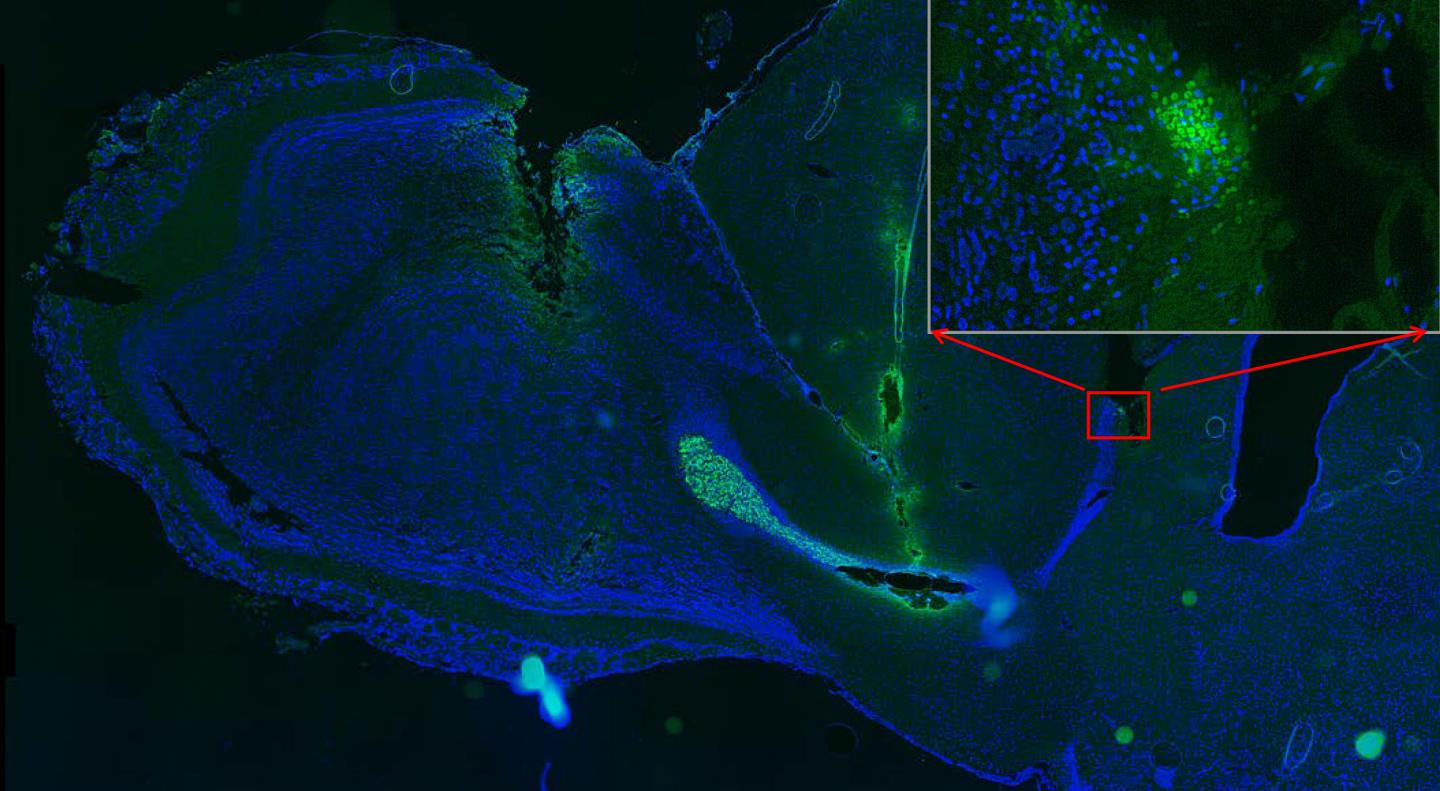현재 위치:홈 > 뉴스현황 > Press Events > Neural Stem Cells St...
저자: 업로드:2017-07-13 조회수:
Scientists at the University of California, Davis School of Medicine's Institute for Regenerative Cures report that electric fields can be used to guide neural stem cells transplanted into the brain toward a specific location. Their study (“Electrical Guidance of Human Stem Cells in the Rat Brain”), which appears in Stem Cell Reports, opens possibilities for effectively guiding stem cells to repair brain damage.

“…we report a strategy that mobilizes and guides migration of stem cells in the brain in vivo. We developed a safe stimulation paradigm to deliver directional currents in the brain,” write the investigators. “Tracking cells expressing GFP [green fluorescent protein] demonstrated electrical mobilization and guidance of migration of human neural stem cells, even against co-existing intrinsic cues in the rostral migration stream.”
Min Zhao, M.D., Ph.D., carries out research on how electric fields can guide wound healing. Damaged tissues generate weak electric fields, and Zhao's research has shown how these electric fields can attract cells into wounds to heal them.
"One unmet need in regenerative medicine is how to effectively and safely mobilize and guide stem cells to migrate to lesion sites for repair," Dr. Zhao said. "Inefficient migration of those cells to lesions is a significant roadblock to developing effective clinical applications."
Natural neural stem cells are found deep in the brain, in the subventricular zone and hippocampus. To repair damage to the cortex, they have to migrate some distance, especially in the large human brain. Transplanted stem cells might also have to migrate some way to find an area of damage.
Dr. Zhao, and his colleague, Junfeng Feng, M.D., a neurosurgeon at Ren Ji Hospital, Shanghai Jiao Tong University, and Shanghai Institute of Head Trauma, developed a model of stem cell transplants in rats. They placed human neural stem cells in the rostral migration stream, which is a pathway in the rat brain that carries cells toward the olfactory bulb. Cells move along this pathway, partly carried by the flow of cerebrospinal fluid and partly guided by chemical signals.
By applying an electric field within the rat's brain, the scientists found that they could get the transplanted stem cells to swim upstream against the fluid flow and natural cues and head for other locations within the brain.